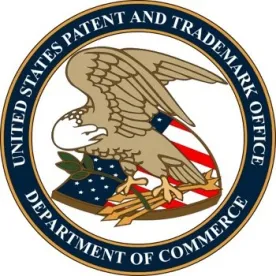In E.I. DuPont De Nemours & Co. v. Synvina C.V., the Federal Circuit reversed the decision of the USPTO Patent Trial and Appeal Board (PTAB) that had upheld Synvina’s chemical process patent against an obviousness challenge brought in an Inter Partes Review (IPR) proceeding. In so doing, the court outlined four ways to prevail against an obviousness rejection based on routine optimization.
The Patent At Issue
The patent at issue was U.S. Patent No. 8,865,921, directed to methods for preparing 2,5-furan dicarboxylic acid under certain reaction conditions found to overlap with conditions disclosed in three asserted prior art references.
The Federal Circuit Decision:Overcoming Obviousness Based On Routine Optimization
The Federal Circuit decision was authored by Judge Lourie and joined by Judges O’Malley and Chen.
The court cited In re Aller, 220 F.2d 454, 456 (CCPA 1955), for supporting the asserted rationale for obviousness:
For decades, this court and its predecessor have recognized that “where the general conditions of a claim are disclosed in the prior art, it is not inventive to discover the optimum or workable ranges by routine experimentation.”
The court also cited In re Peterson, 315 F.3d 1325 (Fed. Cir. 2003), for “[a] more specific application of this general principle”:
A prima facie case of obviousness typically exists when the ranges of a claimed composition overlap the ranges disclosed in the prior art.”
Before addressing the facts before it, the court recognized “several ways by which the patentee may rebut that presumption.”
- If the claimed process parameter “produce[s] a new and unexpected result which is different in kind and not merely in degree from the results of the prior art.” (based on Aller)
- If the prior art taught away from the claimed range.
- If the parameter was not recognized as “result-effective.” (based on In re Applied Materials, Inc., 692 F.3d 1289 (Fed. Cir. 2012))
- If the prior art discloses “very broad ranges” which “may not invite routine optimization.” (based on Genetics Inst., LLC v. Novartis Vaccines & Diagnostics, Inc., 655 F.3d 1291 (Fed. Cir. 2011))
Turning to the facts before it, the court found that “the presumption of obviousness applies here, and none of the means for rebutting it has been shown.”
The MPEP Only Recognizes Two of the Court’s Four Options
I was interested to see the court outline four options for overcoming an obviousness rejection based on routine optimization, because the current MPEP only recognizes two options. In particular, MPEP § 2144.05 only recognizes these two options:
- showing that the range is critical for achieving unexpected results
- showing that the prior art teaches away from the claimed paramter(s)
The MPEP used to recognize the third option—showing that the parameter was not recognized as a result-effective variable—but the USPTO removed that option from the current MPEP, apparently believing that it did not survive KSR. On this point, the MPEP states:
In In re Antonie, 559 F.2d 618, 195 USPQ 6 (CCPA 1977), the CCPA held that a particular parameter must first be recognized as a result-effective variable, i.e., a variable which achieves a recognized result, before the determination of the optimum or workable ranges of said variable might be characterized as routine experimentation, because “obvious to try” is not a valid rationale for an obviousness finding. In KSR International Co. v. Teleflex Inc., 550 U.S. 398 (2007), the Supreme Court held that “obvious to try” was a valid rationale for an obviousness finding, for example, when there is a “design need” or “market demand” and there are a “finite number” of solutions. …. Thus, after KSR, the presence of a known result-effective variable would be one, but not the only, motivation for a person of ordinary skill in the art to experiment to reach another workable product or process.
Although the court here characterizes this option as a “narrow” exception, it confirmed the underlying principle that “a person of ordinary skill would not always be motivated to optimize a parameter ‘if there is no evidence in the record that the prior art recognized that [that] particular parameter affected the result.’” Thus, the revisions to the MPEP may have gone too far in eliminating this option from MPEP § 2144.05.
The MPEP also does not recognize the fourth option outlined by the court. The guidance on establishing the obviousness of a species when the prior art discloses a genus does instruct examiners to “[c]onsider the size of the prior art genus,” but the discussion focuses on situations where a small genus may support obviousness, not where a large genus does not.




 />i
/>i
